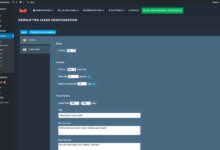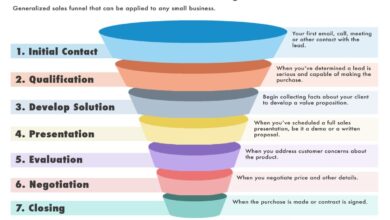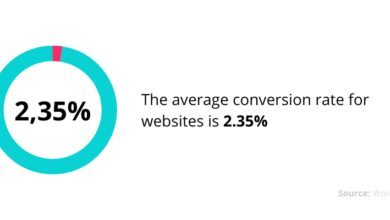Marketing Automation: 7 Powerful Strategies to Skyrocket Growth
In today’s fast-paced digital world, Marketing Automation isn’t just a luxury—it’s a necessity. It empowers businesses to streamline campaigns, boost engagement, and drive conversions with precision and scalability.
What Is Marketing Automation and Why It Matters

Marketing Automation refers to the use of software and technology to automate repetitive marketing tasks, allowing teams to focus on strategy and creativity. From sending personalized emails to managing social media posts, automation tools handle time-consuming processes efficiently.
Defining Marketing Automation in Modern Business
At its core, Marketing Automation involves using platforms to deliver targeted content to the right audience at the right time. This includes automated email sequences, lead scoring, customer segmentation, and campaign analytics. It’s not just about saving time—it’s about increasing relevance and ROI.
- Automates repetitive marketing actions like email follow-ups and social media posting.
- Enables personalized communication at scale.
- Integrates with CRM systems for seamless data flow.
Key Benefits of Implementing Marketing Automation
Businesses that adopt Marketing Automation see measurable improvements across multiple KPIs. According to a report by MarketingProfs, companies using automation experience a 451% increase in qualified leads.
- Improved lead nurturing: Automated workflows guide prospects through the sales funnel.
- Higher conversion rates: Personalized messaging increases engagement and trust.
- Time and cost efficiency: Reduces manual labor, freeing up teams for strategic initiatives.
“Marketing Automation is not about replacing humans—it’s about empowering them to work smarter.” — Ann Handley, Chief Content Officer at MarketingProfs
Core Components of Marketing Automation Systems
Understanding the building blocks of Marketing Automation helps businesses choose the right tools and design effective campaigns. These components work together to create a cohesive, data-driven marketing engine.
Email Automation and Drip Campaigns
Email remains one of the highest ROI channels, and Marketing Automation supercharges it. Drip campaigns send a series of pre-written emails based on user behavior or time intervals.
- Welcoming new subscribers with a 5-part onboarding series.
- Re-engaging inactive users with special offers.
- Triggering cart abandonment emails within an hour of exit.
Tools like Mailchimp and Constant Contact offer intuitive drag-and-drop builders for creating these sequences.
Lead Scoring and Behavioral Tracking
Not all leads are created equal. Marketing Automation platforms assign scores based on user actions—like visiting pricing pages, downloading whitepapers, or clicking links.
- High-intent actions (e.g., demo request) earn more points.
- Low-intent actions (e.g., blog visit) earn fewer points.
- Once a lead hits a threshold, they’re passed to sales automatically.
This ensures sales teams focus on warm, ready-to-buy prospects, improving close rates and reducing wasted effort.
Customer Segmentation and Personalization
Segmentation divides your audience into groups based on demographics, behavior, or engagement level. Marketing Automation uses this data to deliver hyper-relevant content.
- Send different product recommendations to users based on past purchases.
- Customize email subject lines with the recipient’s name or location.
- Adjust website content dynamically for returning visitors.
Personalization can increase email open rates by up to 26%, according to Campaign Monitor.
Top Marketing Automation Tools and Platforms
Choosing the right platform is critical for success. The best tools offer scalability, integration capabilities, and user-friendly interfaces. Here’s a breakdown of leading solutions.
HubSpot: All-in-One Marketing Automation Powerhouse
HubSpot is one of the most popular Marketing Automation platforms, known for its seamless CRM integration and intuitive interface.
- Offers email automation, landing pages, social media scheduling, and analytics.
- Provides free and paid tiers, making it accessible for startups and enterprises.
- Features a robust ecosystem of integrations via HubSpot Marketplace.
Learn more at HubSpot Marketing Hub.
Marketo: Enterprise-Grade Automation for B2B
Marketo, now part of Adobe, is a leader in B2B Marketing Automation, offering advanced lead management and account-based marketing (ABM) features.
- Excels in complex multi-touch campaign orchestration.
- Strong analytics and attribution modeling.
- Ideal for large organizations with sophisticated sales cycles.
Explore Marketo’s capabilities at Marketo.com.
ActiveCampaign: Advanced Automation for SMBs
ActiveCampaign combines email marketing with powerful automation and CRM features, making it ideal for small to mid-sized businesses.
- Offers predictive sending and site tracking.
- Supports conditional logic in workflows for dynamic decision-making.
- Highly customizable with API access and Zapier integration.
Visit ActiveCampaign to start a free trial.
How Marketing Automation Enhances Customer Journeys
The customer journey spans awareness, consideration, decision, and loyalty stages. Marketing Automation ensures consistent, timely, and relevant communication at every touchpoint.
Mapping the Customer Journey with Automation
Automation tools allow marketers to visualize and optimize each stage of the buyer’s journey.
- Awareness: Use blog subscriptions and social media ads to capture attention.
- Consideration: Deliver case studies and comparison guides via email.
- Decision: Send personalized demos or discount offers to close the sale.
- Loyalty: Automate post-purchase follow-ups and referral requests.
This end-to-end approach increases customer lifetime value (CLV) and reduces churn.
Behavior-Triggered Campaigns
One of the most powerful aspects of Marketing Automation is its ability to respond in real-time to user behavior.
- If a user watches a product video, trigger a follow-up email with a discount code.
- When someone visits your pricing page twice in a week, flag them as high-intent and notify sales.
- Send a re-engagement campaign after 30 days of inactivity.
These triggers ensure your messaging feels timely and relevant, not random or intrusive.
Multi-Channel Automation Integration
Modern consumers interact across email, social media, SMS, and websites. Marketing Automation platforms now support cross-channel orchestration.
- Send an email after a user clicks a Facebook ad.
- Follow up with an SMS reminder after a webinar registration.
- Use retargeting ads to reach users who abandoned their cart.
Platforms like Braze specialize in omnichannel engagement, ensuring a unified brand experience.
Marketing Automation for Lead Generation and Nurturing
Generating and nurturing leads is a cornerstone of growth. Marketing Automation transforms this process from a manual grind into a scalable, data-driven system.
Automated Lead Capture Techniques
Automation tools can capture leads from various sources without human intervention.
- Pop-up forms on websites triggered by exit intent.
- Landing pages with integrated forms synced to your CRM.
- Chatbots that qualify visitors and collect contact info.
For example, a visitor downloading a free eBook is automatically added to a nurture sequence, receiving related content over the next few weeks.
Nurturing Leads with Drip Campaigns
Drip campaigns are a series of automated emails designed to educate and build trust over time.
- Day 1: Welcome email with a thank-you and resource link.
- Day 3: Share a customer success story.
- Day 7: Offer a free consultation or demo.
According to Constant Contact, drip emails generate 18x more revenue than broadcast emails.
Scoring and Qualifying Leads Automatically
Marketing Automation platforms assign scores based on engagement levels, helping sales teams prioritize follow-ups.
- Visiting the pricing page: +25 points.
- Opening three consecutive emails: +15 points.
- Clicking a demo link: +50 points.
Once a lead reaches a predefined score (e.g., 100), they’re marked as sales-ready and routed to the appropriate representative.
Measuring Success: Key Metrics in Marketing Automation
Without proper measurement, even the best Marketing Automation strategies can fall flat. Tracking the right KPIs ensures continuous improvement and accountability.
Email Performance Metrics
Email remains a core channel in Marketing Automation, and its performance is highly measurable.
- Open Rate: Percentage of recipients who opened the email.
- Click-Through Rate (CTR): Percentage who clicked a link inside.
- Conversion Rate: Percentage who completed a desired action (e.g., purchase, sign-up).
- Bounce Rate: Percentage of emails that couldn’t be delivered.
A/B testing subject lines or CTAs can significantly improve these metrics over time.
Lead Conversion and Sales Funnel Metrics
Marketing Automation provides visibility into how leads move through the funnel.
- Lead-to-Customer Rate: Percentage of leads that become paying customers.
- Time in Funnel: Average duration from lead capture to conversion.
- Funnel Drop-Off Points: Identify where prospects are disengaging.
By analyzing these, marketers can optimize workflows and remove friction points.
ROI and Revenue Attribution
Ultimately, Marketing Automation must justify its cost through measurable returns.
- Track revenue generated from automated campaigns.
- Use UTM parameters to attribute sales to specific channels.
- Compare cost per lead (CPL) before and after automation.
Tools like Google Analytics and HubSpot offer attribution models to show how each touchpoint contributes to conversions.
Common Challenges and How to Overcome Them
While Marketing Automation offers immense benefits, implementation isn’t without hurdles. Recognizing these challenges early can prevent costly mistakes.
Data Quality and List Hygiene
Poor data quality undermines even the most sophisticated automation. Invalid emails, outdated information, and lack of segmentation lead to low engagement.
- Regularly clean your email lists using tools like ZeroBounce.
- Use double opt-in to ensure subscriber validity.
- Segment lists based on activity to avoid sending to inactive users.
Over-Automation and Losing the Human Touch
Automation should enhance, not replace, human interaction. Over-automating can make communication feel robotic and impersonal.
- Use personalization tokens (e.g., {{first_name}}) to add warmth.
- Allow opt-outs and preference centers for user control.
- Insert manual follow-ups for high-value leads.
“The best automation feels invisible—like great service.” — Chris Hexton, VP of Marketing at HubSpot
Integration and Technical Complexity
Many Marketing Automation platforms require integration with CRMs, e-commerce systems, and analytics tools. Poor integration leads to data silos and inefficiencies.
- Choose platforms with native integrations (e.g., Shopify, Salesforce).
- Use middleware like Zapier or Make for custom connections.
- Invest in training for your team to maximize platform capabilities.
Future Trends in Marketing Automation
The landscape of Marketing Automation is evolving rapidly, driven by AI, machine learning, and changing consumer expectations.
AI-Powered Predictive Analytics
Artificial Intelligence is transforming Marketing Automation by predicting customer behavior before it happens.
- Predict which leads are most likely to convert.
- Forecast optimal send times for emails.
- Recommend content based on browsing history.
Platforms like Salesforce Marketing Cloud use Einstein AI to deliver these insights.
Hyper-Personalization at Scale
The future of Marketing Automation lies in delivering one-to-one experiences to millions.
- Dynamic content that changes based on user data.
- Personalized product recommendations in real-time.
- Customized video messages generated automatically.
This level of personalization increases relevance and drives higher engagement.
Voice and Conversational Automation
With the rise of smart speakers and chatbots, voice-based marketing is emerging.
- Automated voice assistants that answer customer queries.
- Interactive voice response (IVR) systems for lead qualification.
- Voice-activated promotions via Alexa or Google Assistant.
While still nascent, this trend will grow as voice search adoption increases.
What is Marketing Automation?
Marketing Automation is the use of software to automate repetitive marketing tasks such as email campaigns, social media posting, lead nurturing, and customer segmentation. It helps businesses deliver personalized experiences at scale while improving efficiency and ROI.
How does Marketing Automation improve lead generation?
It improves lead generation by automating lead capture through forms, pop-ups, and chatbots, then nurturing those leads with targeted content via email or SMS. Automated lead scoring ensures only the most qualified prospects are passed to sales, increasing conversion rates.
What are the best Marketing Automation tools for small businesses?
Top tools for small businesses include Mailchimp, ActiveCampaign, and HubSpot. These platforms offer affordable pricing, easy setup, and robust features like email automation, CRM integration, and analytics.
Can Marketing Automation work for B2B companies?
Absolutely. B2B companies benefit greatly from Marketing Automation through lead scoring, account-based marketing (ABM), and multi-touch nurturing campaigns. Platforms like Marketo and Pardot are specifically designed for complex B2B sales cycles.
Is Marketing Automation expensive?
Costs vary by platform and scale. Many tools offer free tiers or low-cost entry plans (e.g., HubSpot, Mailchimp). Enterprise solutions like Marketo or Salesforce Marketing Cloud are more expensive but justified for large organizations with high-volume campaigns.
Marketing Automation is no longer optional—it’s a strategic imperative for businesses aiming to grow efficiently in the digital age. From automating emails to scoring leads and personalizing customer journeys, the right tools and strategies can transform marketing from a cost center into a revenue driver. By understanding its components, leveraging top platforms, measuring performance, and staying ahead of trends like AI and hyper-personalization, companies can unlock unprecedented levels of engagement and profitability. The key is to start small, focus on data quality, and scale intelligently.
Further Reading:









